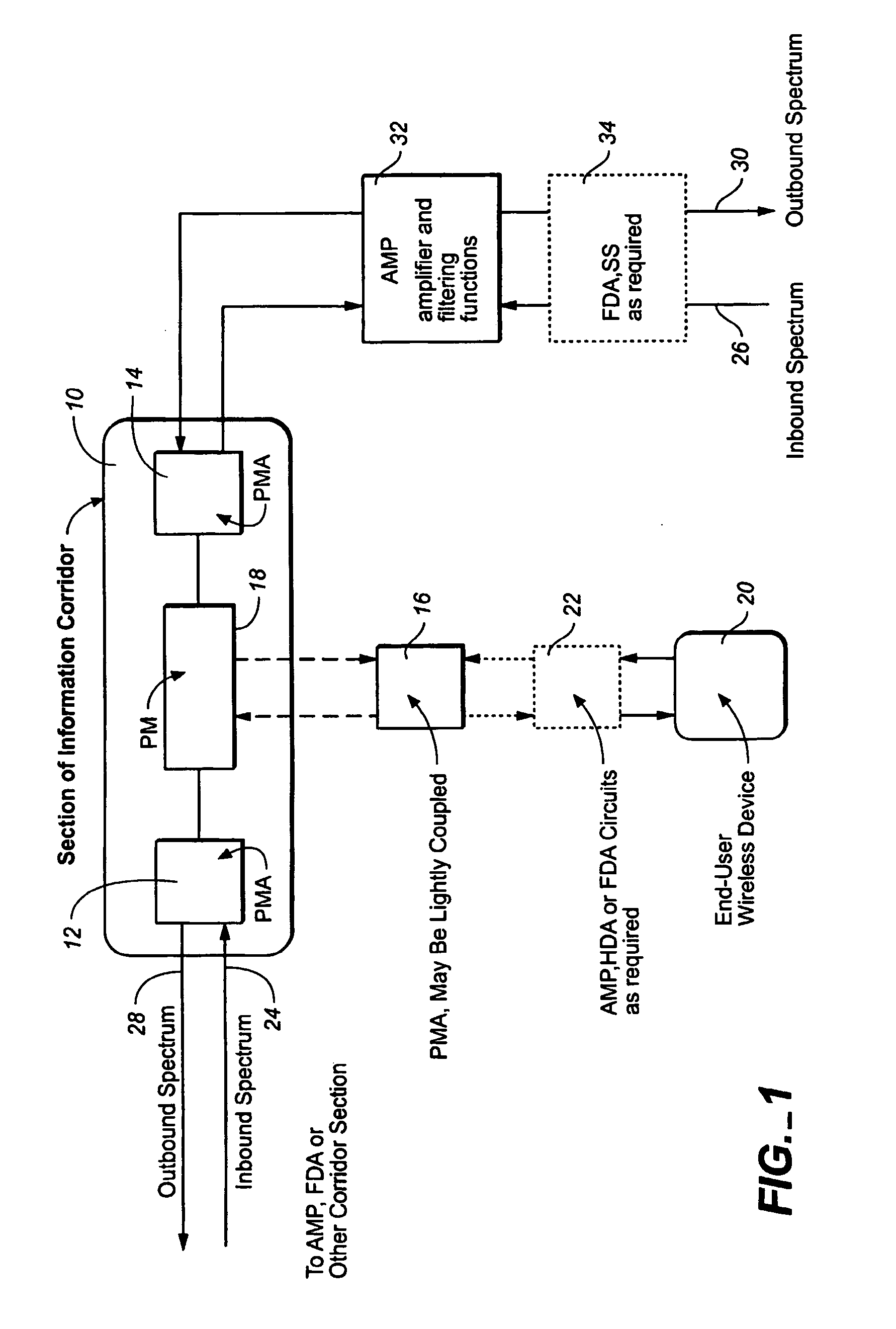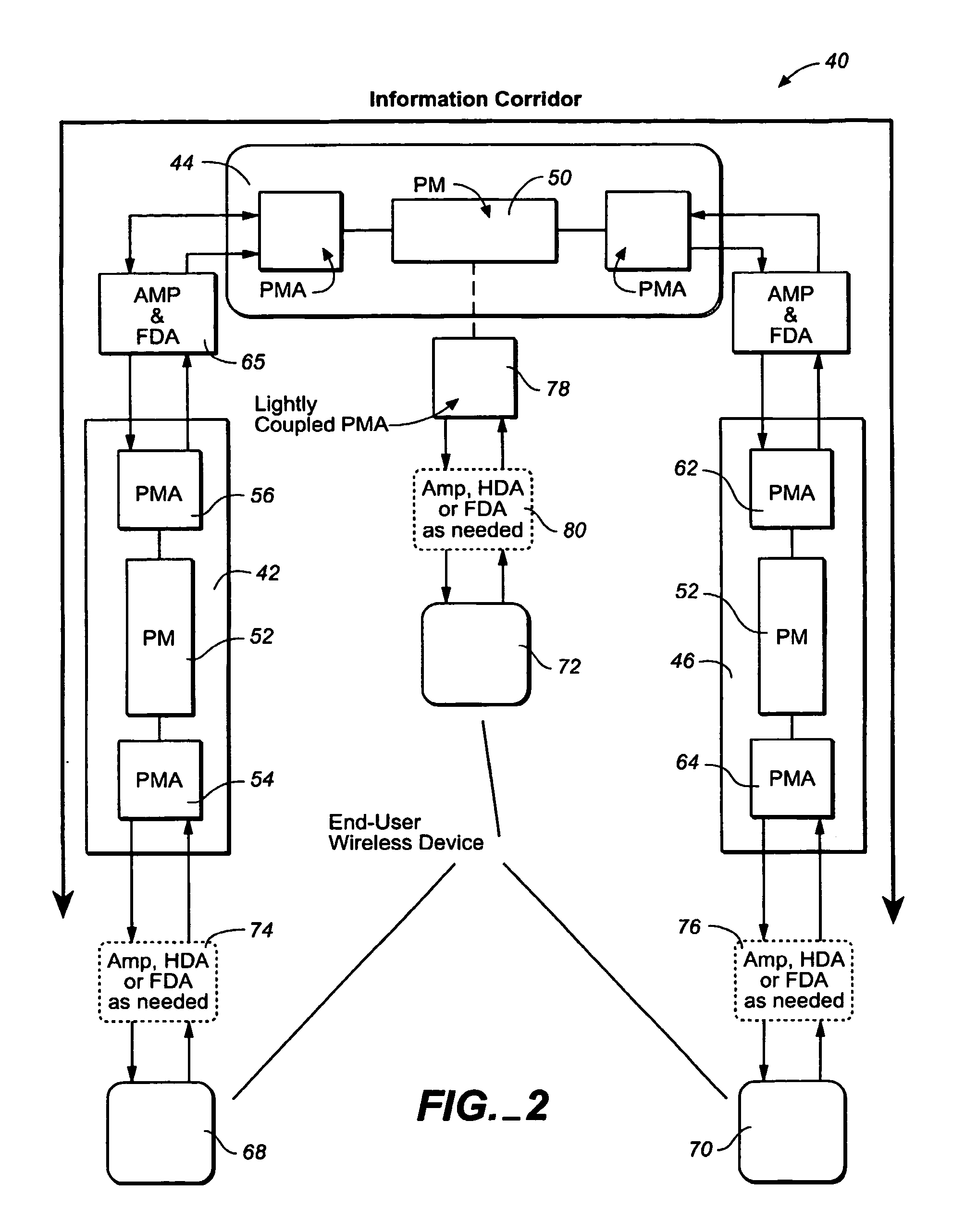(d) Half Duplex: A type of operation over a medium designed for duplex operation but which can only be operated in one direction at a time because of the terminating equipment; the transmission facility permits full duplex operation but the terminating equipment does not allow simultaneous
bidirectional communication;
Existing systems and networks initially pressed into service for this purpose have proven to be inadequate as requirements have changed.
To date, although a number of approaches have been devised and implemented, no single clear solution to this problem has emerged.
Only a small fraction of the resource transferred is either wasted, lost or misdirected.
Typically, the same cannot always be said of the lower capacity conduits.
Further, even though they are smaller, each has the overhead of an "installation," obtaining and maintaining a suitable path over which the resource can flow.
However the lower operating efficiencies and relatively greater installation expenses, compared to the transfer capacities, can cause these smaller conduits, on the whole, to be the most expensive and difficult part of the total
distribution system.
There is an overhead associated with the creation of any conduit.
In effect,
fiber optic capacity has been overbuilt, and the present problem is how to cost-effectively connect from a major switch to end users.
But in
spite of this great increase in user traffic, the high capacity backbones have kept up; the information capacity and rate limitations almost always occur at or near the user.
The economy of scale along with the fundamental capability of
fiber technology have kept the high capacity conduits adequate but have not solved the
appetite of the home users.
They all have some degree of shielding, which limits the susceptibility to
external noise sources.
Without the addition of periodic amplification, there is some maximum length beyond which all of these systems fail to deliver adequate S / N to support information flow.
However, by their heritage they are shared systems, and the spectrum available for reverse information flow and achievable S / N is limited.
These factors set an upper limit on the per-
user information capacity, particularly when there are many users sharing a common section of cable.
Optical Fiber:
Fiber is an excellent medium with respect to its information
carrying capacity, but it has the drawback of being installed primarily at the large conduit level; as yet, it is not already installed and readily available to most individual end users.
Fiber optic cable is generally laid underground in conduits, requiring a relatively expensive installation which is currently prohibitive for most individual users.
They all tend to be unshielded and have some degree of susceptibility to unwanted
signal and
noise sources.
This means that losses increase more slowly with increasing length than for wired systems.
In practice, however, the presence of
atmosphere and atmospheric disturbances, and especially obstructions caused by
terrain, buildings and foliage, can greatly increase the loss over and above the
free space value.
However, they also have a
disadvantage inasmuch as their unguided nature makes them more susceptible to unwanted
noise and signals.
Spectral reuse can therefore be limited.
However in practical
last mile environments, obstructions and de-steering of these beams along with absorption by elements of the
atmosphere like
fog and rain, particularly over longer paths, greatly restricts their usefulness in
last mile wireless communications.
While this means that it is not possible to focus the beams nearly as much as for light, it also means that the aperture or "capture area" of even the simplest,
omnidirectional antenna is greatly larger than that of the lens in any feasible optical
system.
On the other hand, the lower carrier frequencies are not able to support the high information bandwidths required by Shannon's equation, once the practical limits of S / N have been reached.
Terrestrial television has generally been limited to the region above 50 MHz where sufficient information bandwidth is available, and below 1000 MHZ, due to problems associated with increased
path loss as mentioned above.
Two-Way
Wireless Communications: Two way communications systems have primarily been limited to lower information capacity applications, such as audio,
facsimile or radio teletype.
For the most part, higher capacity systems, such as two way video communications or terrestrial
microwave telephone and date trunks, have been limited and confined to UHF or
microwave and to point-point paths.
They are also very expensive to deploy and each
satellite must serve many users.
Additionally, the very long paths of geostationary satellites cause information latency that makes many real time applications impractical.
Therefore, as a solution to the last
mile problem
satellite systems have application limitations.
This causes the received signal to be functionally weak, unless very large, directional terrestrial antennas are used.
A parallel problem exists when a
satellite is receiving.
These requirements render high information capacity, bidirectional satellite information systems uneconomical as a solution to the last
mile problem.
Except for extremely small geographic areas, broadcast systems are able to deliver large amounts of S / N only at low frequencies, where there is insufficient spectrum to support a large number of users.
While complete "flooding" of a region can be accomplished, such systems have the fundamental drawback that most of the radiated ICE never reaches a user and is thus wasted.
As information requirements increase, broadcast "
wireless mesh" systems (also sometimes referred to as cells or microcells), which are small enough to provide adequate information distribution to and from a relatively small number of local users, require a prohibitively large number of broadcast locations or "points of presence" along with a large amount of excess capacity to make up for the wasted energy.
Previous attempts to provide high speed and high volume information services to end users have fallen short of the demand.
The provision of services that provide audio and
video on demand to homes and offices worldwide has been hindered by the lack of high speed information paths to and from potential customers.
Some newer infrastructures, like CATV systems, have provided large information capacity in one direction and required a very large and expensive distribution network.
While the one-way, per-user capacity of these systems was greater than conventional telephone systems (referred to as POTS), they were not originally designed for very high speed and very high volume two-way information flow, nor did they all provide dedicated, unique information conduits to each
end user.
Satellite-based systems have some of the same limitations as CATV systems in this regard.
They must be shared among many subscribers and users, which greatly limits the per-
user information rates and capacities when serving a multitudes of users.
All prior attempts have fallen short in their ability to provide large bi-directional information capacity to end users in an economical manner, in the form of wide bidirectional bandwidth along with high signal-to-noise ratios.
No existing
system has yet demonstrated efficient and economical ICE transfer using existing wired or wireless techniques which provide sufficient information capacity to meet the present user requirements.
 Login to View More
Login to View More  Login to View More
Login to View More 


